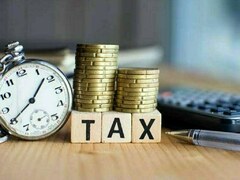TOKYO: The Bank of Japan will likely keep interest rates ultra-low on Friday and reassure markets that monetary stimulus will stay, at least for now, as China’s economic woes and the global fallout from US interest rates cloud the outlook.
The accommodative policy contrasts with that of the US and European central banks, which have hiked rates to record levels and signalled that borrowing costs will stay high to combat sticky inflation.
With rising raw material costs also keeping Japan’s inflation above their 2% target for more than a year, BOJ policymakers are increasingly talking up the need to shift away from the massive stimulus of the past decade.
Given uncertainty over the wage outlook, however, there is no consensus within the BOJ on when and in what order the bank ends negative short-term interest rates and a bond yield cap, say three sources familiar with its thinking.
Many central bank policymakers prefer to hold fire until there is more clarity on whether Japan’s fragile economy can weather the hit from slowing US and Chinese demand, they say.
“Uncertainty over the global outlook is very high, posing a huge risk to Japan’s economy,” one of the sources said.
“The outlook for the global economy, particularly that of the United States, is crucial in determining whether Japanese companies can keep hiking wages next year,” another source said.
At the two-day meeting ending on Friday, the BOJ is widely expected to maintain its short-term interest rate target of -0.1% and that for the 10-year bond yield around 0%.
It is also seen leaving unchanged guidance pledging to keep intact its bond yield control policy until inflation stably hits the bank’s 2% target, the sources said.
Markets are focusing on whether Governor Kazuo Ueda will offer any fresh signals on the timing of a policy shift at his news conference scheduled after the meeting.
In an interview this month, Ueda said the BOJ could have enough data by year-end to determine whether to end negative rates, heightening market expectations the bank could push short-term rates to zero this year or early next year.
That would be much sooner than estimates in a Reuters poll in August, when nearly 60% of analysts expected an end to negative rates to come in “2025 or later.”
Ueda’s comments pushed Japanese government bond (JGB) yields higher across the curve, prompting the BOJ to step into the market on Sept. 11 to slow the pace of rises.
The 10-year JGB yield hit 0.72% on Monday, off a new 1.0% cap adopted in July, but exceeding the allowance band set at 0.5% up and down each around the 0% target.
In July, the BOJ took steps to allow long-term rates to rise more freely in line with increasing inflation, a move markets saw as the start of a slow shift away from former Governor Haruhiko Kuroda’s radical stimulus.
At this week’s meeting, the board is likely to debate factors driving the recent rise in bond yields, and whether the steps taken in July are helping improve market liquidity.
























Comments
Comments are closed.